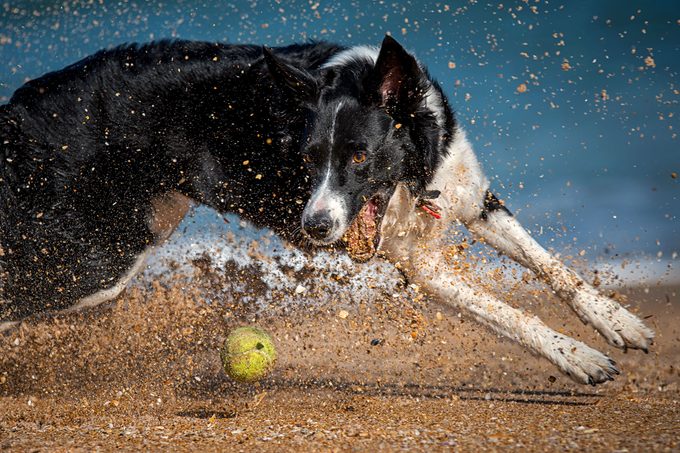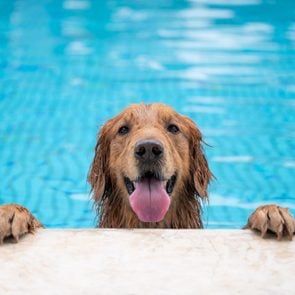Dog Owners Need to Be Aware of This Hidden Danger at the Beach
Updated: Sep. 08, 2023

Before taking your dog to the beach this summer, here's what you need to know to keep them safe.
Picture the perfect beach day: The sun is shining, the ocean waves are crashing and you can feel the sand between your toes. For dog owners, an ideal beach day most likely includes bringing along their pup. There are plenty of dog-friendly beaches where pets can roam, enjoy the waves and play fetch.
However, after needing to take her pup to the emergency vet following a beach day, one TikToker and dog owner—@olliepopmaltipoo—is warning that pet owners need to be aware of a very commonly present danger can lead to some serious puppy health issues. With beach season approaching, this is what owners need to know about summer safety for dogs so a perfect beach day doesn’t turn into a trip to the vet.
What danger do dog owners need to be aware of at the beach?
Dog owners need to be aware that while playing fetch on the beach is certainly a blast, it can quickly lead to sand impaction. According to the Animal Emergency & Referral Center of Minnesota, impaction is when a “material compresses and forms a blockage in the intestines.” When a dog plays with a toy covered with wet sand and ends up swallowing some of that sand, it can easily lead to this impaction, as it did for Ollie.
@olliepopmaltipoo PSA for dog owners the next time you take your dog to the beach ⚠️
Impaction at the beach can occur in dogs when they eat too much sand or even rocks. From eating food off the sand to picking up toys, too much sand in a dog’s system leads to a blockage that cannot be moved. Treatment for impaction can vary from fluids to surgery.
How do I know if my dog is experiencing sand impaction?

Luckily, like Ollie’s owner, there are signs to look out for that can quickly identify sand impaction in time to save pups from any damage. According to Ollie’s owner, these symptoms can include vomiting, shaking, panting and restlessness. Further symptoms may also appear such as constipation, abdominal pain and a lack of appetite. Following sand exposure, these symptoms can manifest within a range of a few hours to a few days.
How can I prevent my dog from experiencing sand impaction at the beach?
To try and protect dogs from sand impaction, owners should help their dogs avoid playing with any sandy dog toys, like frisbees and balls. You can also rinse off any and all dog toys if they are covered in sand. Additionally, letting dogs dig holes and drink salt water at the beach should be avoided. Plus, make sure not to throw dog treats into the sand. This way, dogs and owners can indulge in safe and satisfying beach days all summer long.
Sources:
- Animal Emergency & Referral Center of Minnesota: “Sand Impaction in Dogs: What Happens When Your Dog Eats Too Much Sand”
- Pet Helpful: “Mom Issues Warning About the Danger of Taking Dogs to the Beach After Pup Falls Sick”




















